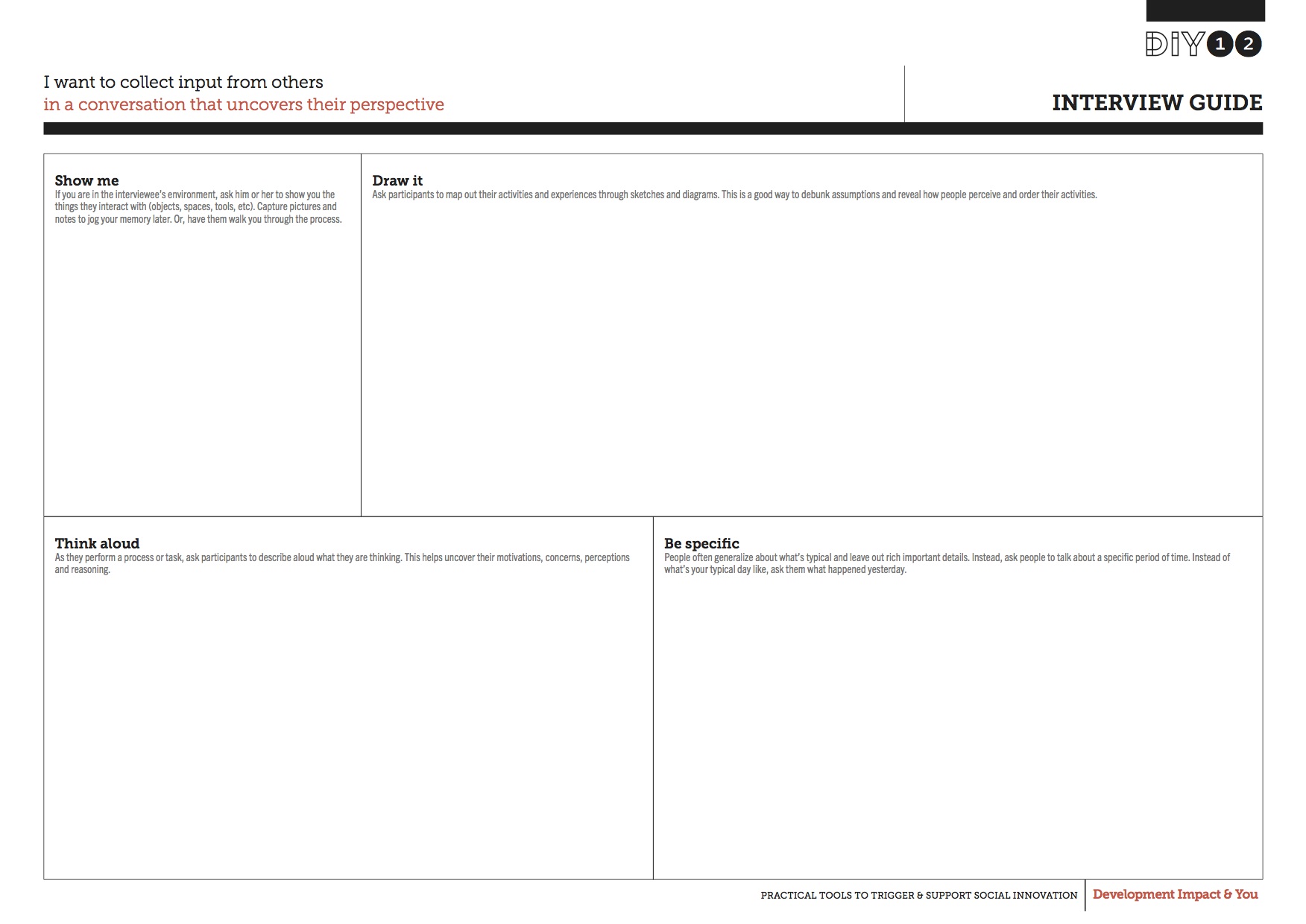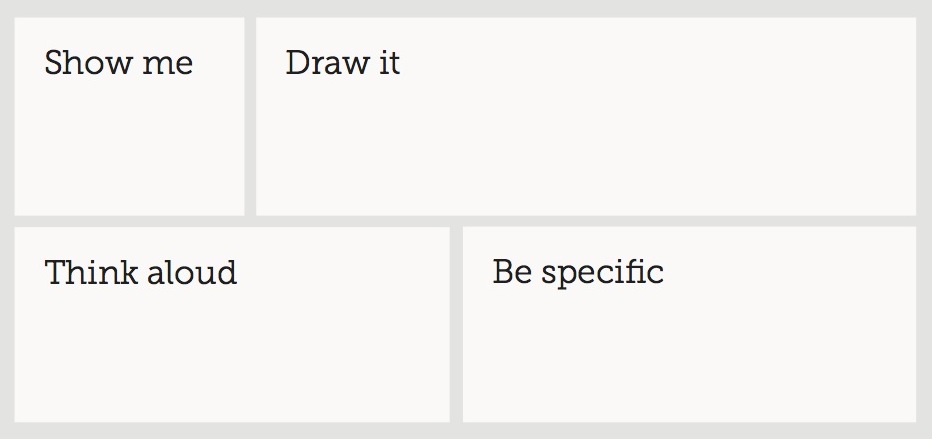The easiest way to understand a person is to speak to them. Interviews are a way to connect with people; an opportunity to hear them describe their experiences in their own words. Speaking to people about their everyday lives can help you define and describe the problems they face, understand the environment they’re part of, and even start to picture the ways in which you can reach them. Interviews can also act as evidence for why your work is needed, or even what impact your work is creating.
Getting what you want from an interview however can be harder than you think – what people say and what they actually do are often very different things. Establishing an in-depth understanding of a particular experience might take some time, and requires a series of questions and activities as part of a conversation. Even a short interview can provide a huge amount of information, with masses of material quickly piling up when you start speaking with several people. The Interview Guide acts like a checklist to help you prepare a game-plan for an interview.

